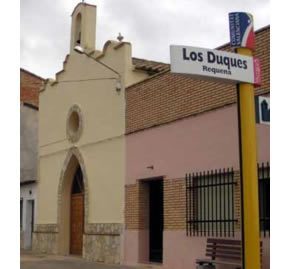 The concept that we will deal with below has a special presence and importance in the field of road safety since it refers to maximum degree or ceiling that is established in the movement of a car on a road, street, highway, among others.
The concept that we will deal with below has a special presence and importance in the field of road safety since it refers to maximum degree or ceiling that is established in the movement of a car on a road, street, highway, among others.
Speed bump for driving on a street or highway with a car
Speeding is one of the leading causes of fatal road accidents worldwide.
When a motorist drives fast, they will present less reaction, difficulty, when controlling the vehicle, and their senses will be diminished.
Now, the speed limits are imposed depending on the type of road but we cannot ignore that the vehicle also establishes the maximum speed, it is not the same as a race car, or that it has a very high maximum speed, than one that offers an average speed.
The commitment of drivers to respect the maximum speed and prevention, keys to reducing accidents
Speed limits usually range from 20 km / h to 130 km / h.
Road safety is particularly concerned with the prevention of traffic accidents and also the minimization of the effects that these may present in regard to the life and health of people.
For example, both regulatory standards and the responsible commitment of those of us who use public roads, whether drivers or pedestrians, turn out to be the main elements of road safety.
Because for there to be satisfactory road safety it is necessary for the state to be present through the regulation of standards, but the participation of users with their commitment to respect them is also essential.
Meanwhile, the speed limit is one of the most important rules when it comes to preventing traffic accidents, since if the speed values established for each road are respected, the chances of collisions or any other accident will be reduced.
It should be noted that in most countries in the world, the laws establish different speed limits depending on the roads through which the vehicles travel.
Limits depending on the roads
Because the speed must be adapted to the environment, that is, it is not the same to drive on a route or highway than to do it on a street in the middle of the city where many people walk, or along a winding road in the countryside.
So, although there are some differences depending on where you are, the following are the most extended safety limits: 130 km / h (on highways with good paving and signaling conditions), 90 km / h (on common roads that have a margin of 1.5 m.), 50 km / h (on roads with a margin of 6.5 m and in urban streets and crossings), 20 km / h (in streets with only one carriageway and pedestrian).
Boundaries in proximity to schools and urban areas
On the other hand, we cannot ignore that there are also speed limits on streets or highways that are close to schools or urban areas.
Generally, special controls are installed, such as cameras, that record and take photos of the patents of those cars that exceed that allowed limit, and then, of course, send a fine to that driver who disobeyed the regulations.
There are many educational establishments that are located on streets or roads through which significant traffic circulates and then as a consequence of this and the need to preserve children and young people who constantly circulate through those places is that drivers are warned through of posters the existence of the school and the order to slow down, or failing to turn with caution.
The importance of signage and awareness
Something similar happens with routes that cross cities, the driver in question is also indicated with large and precise signs that he is passing through an urban area and then he must slow down.
Signage is very important because there are many drivers who may be driving on a road for the first time and are unaware of these places.
The best way to make drivers aware of maximum speeds is through signage and road campaigns that can be disseminated through the various mass media.









